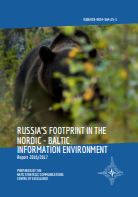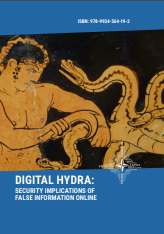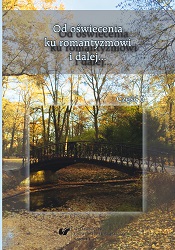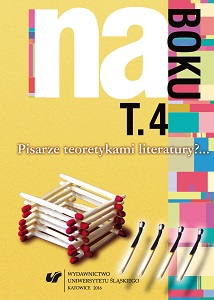
We kindly inform you that, as long as the subject affiliation of our 300.000+ articles is in progress, you might get unsufficient or no results on your third level or second level search. In this case, please broaden your search criteria.


The study investigates misinformation and disinformation on social media in the context of the rise of ‘fake news’ and the birth of the ‘post-truth’ era. Are these concerns substantiated by facts? What are the consequences of these phenomena for the information environment? Most importantly, do these phenomena pose a threat for our societal security? This study will provide actionable knowledge by answering to these questions.
More...
Different platforms dominate different cultural-geographical areas. Different networks lend themselves to different exploitation tactics. Social media companies are aware of the impact that disinformation planted online has on public discourse, and have come up with some countermeasures. However, it remains to be seen the extent to which these countermeasures are effective. Russian-speaking internet users prefer Russian-made social media platforms. These platforms are qualitatively different from their Western counterparts, and can be used more effectively in disinformation campaigns by malicious actors.
More...
Blogs provide fertile ground for framing narratives. This chapter demonstrates that aside from the blog post itself, reader comments can make the narrative more persuasive. However, the absence of a social network structure for blogs inhibits the dissemination of these narratives. Social media platforms such as Twitter and Facebook are used as vehicles to disseminate the content using cross-media and mixed-media tactics. The link between blogs and social media platforms is vital for understanding contemporary disinformation campaigns.
More...
This chapter discusses how user data collected by third-party services coupled with online advertising technologies can be exploited for targeted information activities. This chapter also presents findings from our study of online news sources mentioned in a discussion regarding the NATO presence in the Baltic States and Poland on Twitter. The discussion is referred to as the Enhanced Forward Presence (eFP) dicussion, using NATO’s name for its defence and deterrence posture in Eastern Europe.
More...
This publication highlights how false information online brings about a number of security implications. We likened false information to the Lernaean Hydra, the mythical creature that could generate two new heads for each head it lost to the axe. According to the myth, Heracles slayed it by thinking outside the box, burning the stumps of the severed heads, and smashing the only true mortal head the monster had with a rock. Analogously, anyone who is battling disinformation online must think beyond simply debunking single stories.
More...
The entries presented here are intended to help the reader understand the key terms that are discussed throughout the research product. This unofficial terminology, updated as of 1st November 2017, is aimed at serving further research. The list is inclusive, i.e. it includes terms that are not used in the study, but are central to the discussion. Moreover, some of the entries were not intended to be descriptions in the original context: when this is the case, the “comments” section points it out. While the list is inclusive, only one definition is given for each term, in order to keep this glossary simple and easy to use.
More...

The present article analyses the fantasy themes in the Rękopis znaleziony w Saragossie by Jan Potocki from the perspective of their theatricality. The Rękopis, traditionally treated as a novel which exposes the belief in supernatural phenomena, appears in the interpretative perspective that was embraced as a work which reveals in a penetrating way complex relations between truth and illusion as well as the facility with which the boundary between these two things may be modified. This problem does not assume merely the forms of epistemological or psychological reflection – also the ways of creating novelistic and theatrical illusion are problematised in this context on a level with the methods of their deconstruction. These observations lead us to a conclusion that against the background of its contemporary novels, the Rękopis constitutes an example of an exceptionally conscious and multi‑faceted use of the convention of fantasy literature.
More...
The author of the article attempts to prove that Otherness in Maria by Antoni Malczewski is not limited merely to the protagonists of the poem but also involves the nature that was created by the writer (the flora and the fauna) as well as the beliefs and customs. This aspect has to do also with the entire group of artists – “the Ukrainian school of Polish Romanticism” – within which Malczewski is classified. At the same time, the article represents a contribution to the discussion about post‑colonialism and the Polish contexts of this phenomenon that goes on in the humanities.
More...
The article engages the heretofore unexplored problem of inexpressibility in theSonety krymskie on the basis of the methodological remarks of Edward Balcerzan. Inthe Crimean cycle of poems the author seeks signals of inexpressibility which he attemptsto functionalise. Moreover, the author discusses the mysteries (inter alia the“lampa Akermanu,” the interjection “Aa!”), which heretofore have not been solved bythe researchers. He also reflects upon the subject of Romanticist cognition in the sonnetcycle.
More...
The article presents the image of Adam Mickiewicz which is contained in thecorrespondence of Juliusz Słowacki. The publication demonstrates that Słowacki’s attitude toward Mickiewicz underwent a constant evolution. At the beginning the young poet sought understanding with the “first bard” exclusively in the field of literature; he wanted to learn Mickiewicz’s opinion about his work and to meet him. However, in the subsequent years Słowacki indulged in more and more daring comments (also in ones which went beyond the sphere of literature) in reference to the creator of Pan Tadeusz and at the same time he desired to level the literary distance between them. What is important is that in Słowacki’s epistolography there is reflected a dramatic change which the poet underwent in reference to the acquaintance with the ideological programme of the Koło Sprawy Bożej, which also influenced the relation of the “second bard” with Mickiewicz. Moreover, the article also directs the reader’s attention to the ways in which Słowacki’s statements about Mickiewicz are constructed, inter alia about the careful choice of vocabulary and the peculiar arrangements of passages concerning the adversary against the background of a given letter.
More...
The article is an attempt at an analysis of Godzina myśli (The Hour of Thought) as a text which is a point of departure in the discussion of a creative parallel between the work of Pedro Calderón and Juliusz Słowacki – a theme which was frequently engaged.The hour of thought i.e. “the most beautiful dream of the imagination” of the poet reveals the fundamental role of the imagination in the images created by this poet. It is the imagination which imposes on him specific – ideal – spaces as well as details. It presents Słowacki as a visionary and the great master of the word who saw through the eyes of his own fantasy the images of the author of El príncipe constante. Moreover, he felt those images as if he created them himself.Słowacki is the “visualiser” type who paints with words, similarly as Calderón who idealises images. The Spaniard’s point is – above all – to present reality “as he dreamt it in his soul.” It seems that it is exactly idealisation, imagination and sympathy that constitute the fundamental point of departure in the discussion about the creative analogy between the Pole and the Spaniard.
More...
The article engages the problems of the role of the Cyganeria warszawska in theprocess of the formation of the modern readership market. It presents the influence of the members of this group upon the mentality‑related changes and upon the developmentof literature toward democratisation and modernisation of the readership market.It proves that the activity of the group was not merely a gaudy spot on the map of the 19th‑century society but that it effectively challenged the existing relations. Forthe cyganie (Bohemians) managed to stir the ossified society not only with their way oflife but also with their literature. By deriding the lack of authenticity and the hypocrisy of inter‑human relations they contributed to the decline of the many‑year tradition of lordly patronage. This form of supporting poets never involved disinterested aid – the cyganie demonstrated that accepting such aid was tantamount to selling oneself and giving up oneself, and they could not bear such a thing.The article also engages the problems of the influence of the members of the Cyganeriawarszawska upon the change in the way the poet was perceived – they managed to combine courage in facing poverty with the solidification of the image of men of letters who rose above the multitude. The question of the way in which the audience – the pillar of the democratic marked – perceived them is also discussed.
More...
The object of analyses contained in the article is the decorative edition of KonradWallenrod and Grażyna of 1851; the author of the editorial concept of this book, the designer of its illustrations and its editor was Jan Tysiewicz. The aim of the argument is to consider how the graphic arts visualise the literary word and also how it interprets, modifies it and how it generates unexpected meanings, which enables the emergence of a common space of reception in which the literary imagination meets the graphical imagination. The problems to which I devote my work are located at the boundary of two main disciplines: the history of literature and the history of art. The question about the primary differences between a text and an illustration as well as the question of introducing an ideological aspect to the visualisations which are put forward by Tysiewicz enabled me to see the general cultural problems and to understand the interpretation of aesthetic values.
More...
The aim of the text is to examine the way in which the word fado, one of the mostrecognisable keywords of Portuguese culture, was used in the titles of contemporaryPolish texts representing various genres and types of literature. The selection of thetitles as a material for the analysis was determined by the belief (justified by researchworks) that the title constitutes an exceptionally important element of the work, enteringin complex interactions of various kinds with the text of the work.
More...
The sketch is meant simultaneously as a reconnaissance and an outline of researchon mutual relations (permeations) between literary and theoretical discourses. On the basis of the microinterpretations of contemporary novels (Do niewidzenia, do niejutra by Joanna Bartoń and Dziady by Paweł Goźliński), the author points out to the shift of the “presence” of theoretical discourse from the margin position to the centre arranging a literary text. The author also poses a question whether this is the feature of postmodern narration. Also, a question of fundamental importance for outlining the situation of contemporary literature, concerning the place of the institution of literature in contemporary culture.
More...
Zbigniew Herbert is not only a poet of irony, but also a careful reader of poetry and its teacher, not infrequently mocking the kind that is too detached from reality, devoid of strength, simplicity, and dignity (“siła, prostota i godność”).Various scattered writings published by the poet within a period of half a century provide a rich material containing explicitly formulated views on basic problems concerning poetry, its role, but also its values, meaning, and the specificity of a poetic word (including the functions of rhymes or metaphors). The aim of didactic contributions becomes to demonstrate that poetry is a basic commodity, necessary for every‑day life, but also to specify its place in culture and in history.As a theorist and a poet, he considers the role of poetry and a poet, as well as the significance of beauty. He discusses with the arty idea of situating the poet above the world: poetry is not a value in itself (and for itself), it emphasizes the value, but appreciates it only when it becomes an attempt at surpassing itself, when it opens up for the other and the reality. Poetic language has to suit ordinary human life, as only then will it be able to control the chaos of reality. Despite the fact that the author of Mr. Cogito distances himself from the youthful optimism concerning the influence of poetry on the fate of the world and the progress of mankind, he does not cease to believe in its power to construct values and to reconstruct the morality of the world. Artistic actions that he undertakes are referred to as „wycieczka aktywnej wyobraźni w poszukiwaniu struktury, porządku” (“a trip of active imagination in search of structure, order”). In all these actions one can discern the wish to penetrate the essence of words and objects, and to rip the language form the semantic crisis (“zapaść semantyczna”) that renders the distinctions between god and evil, truth and falsehood impossible. Herbert demonstrates that poetry is not merely trade wastepaper (as he calls it, “handlowa makulatura”), but an unusual power, which, thanks to its ordinariness, is capable of reconciling man with reality.
More...
The present essay is an attempt at an attentive, micrological glance at the poet’sworks, compiled in the volume entitled Wiersze zebrane (Cracow 2006, p. 5–494). The rhetorical figures mentioned in the title concern two syntactic constructions: zeugma – e.g. „czołgi, co łamią śmieszne szlabany i zasady” (sampled in Wiersze zebrane, p. 244), and syllepsis – e.g. the writing on the pub wall: „Piwa i pacierza nie odmawiam”. (M.M. Hurley, D.C. Dennett, R.B. Adams, Jr.: Filozofia dowcipu. Humor jako siła napędowa umysłu. Transl. R. Śmietana. Cracow 2016, p. 233). I come to the conclusion that zeugmas occur already in the first volume of Barańczak (Korekta twarzy [Facial Corrections]), glowing and ruffling (cf. Wiersze, p. 487), up to the last one (Chirurgiczna precyzja [Surgical Precision]). Syllepis is much more infrequent, as it consists in a very sophisticated word‑play (in the aforementioned example‑the ambiguity of the verb „odmawiać” [„to deny”]).I assume that Barańczak’s inspiration – apart from the influence of English metaphysicalpoets translated by him, and also of such great authors like Brodski and Mandelsztam ‑might have been (familiar to him from his early readings), the poem by Miłosz entitled Świty (The Dawns), which begins with such an ambiguous couplet: „Wysoki był dom. W ciemności pełzł (emphasis mine) wielki mur // nad szelest liści u klonów, nad zamęt pośpiesznych nóg”. I think that the young poet was captivated and incited (to action) by the phrase „pełzł wielki mur”, which may signify both the wall fading, going pale (as the night fades away), as well as its moving and crawling. The micrology, therefore, focuses also on words that conceal the abundance of associations, characteristic for the homonyms of the Polish language.
More...
Jan Zych was a poet, translator, and copy editor. Auto‑thematic motifs appearingin his works mainly concern two areas. The first is a folk ancestry of poetry, which is frequently referred to by Zych, and which results not only from the poet’s background.The motif of a folk song occurs the most demonstrably in the first volume, although its echo will sound also in the last one. The second area concerns the role of a poet and poetry, to which Zych has an ambivalent attitude. Nevertheless, from volume to volume, he approaches both the words and himself‑the poet with more and more humbleness, even doubt, which is perfectly evidenced by the terse form of his last poems. Referring to lyric poetry as „świecka modlitwa” („a secular prayer”) and „pozdrowienie dla moli” („greetings to moths”) is at the same time referring to its origin and emphasizing his own contradictory attitude towards poetry, with an inclination to downgrading its role.
More...